Kichijoji Manga Artist’s Office Space
・・・・・・・・・・
Hello everyone, how are you all? This is Tanaka from GRIDFRAME.
On June 20th, we completed the handover of an office to a manga artist in Kichijoji, Tokyo.
This time, I would like to report in detail about this office.
As we reported in Vol.6, the colorful iron plates harvested like agricultural produce at the “1st Paint Miracle” are dancing in the gallery space.
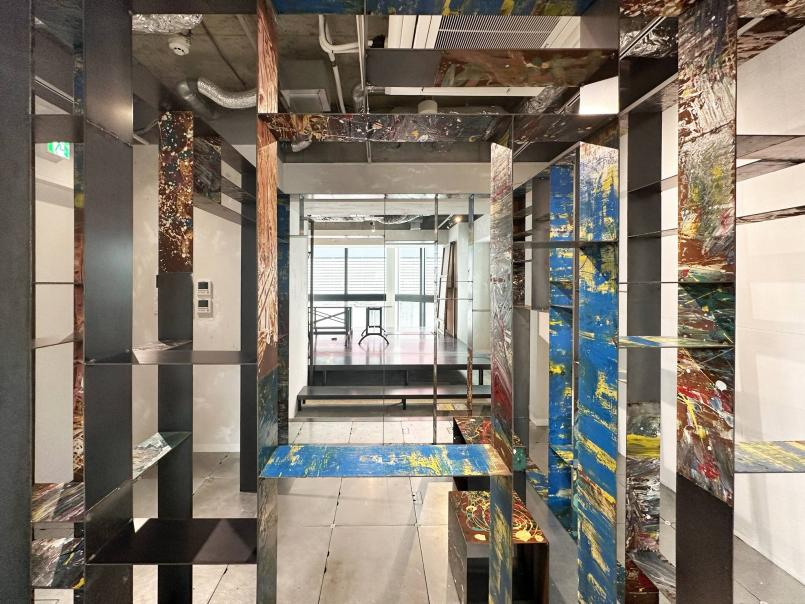

The workspace and break space was made from SOTOCHIKU materials donated by Matsunami Sake Brewery in Matsunami, Noto Town, Okunoto, which was founded in 1868 and was completely destroyed in the earthquake, as part of the “Project to reuse things destroyed in the Noto Peninsula earthquake for the future.”
Six months have passed since the earthquake on New Year’s Day, and by June, my staff and I had made nine visits to Noto, and I am now pleased to report that the project has finally been completed.
First, I’d like to tell you about the spatial concept of the entire office.
<Kichijoji Manga Artist’s Office Concept>
We proposed the following concept story for the office space of a female manga artist who loves cats and is as curious and laid back as a cat herself
:
[Cat Walking Path]
It’s hard to follow a cat quietly
It slips through narrow spaces that I can’t get through
and disappears beyond my sight.
Today, I was once again stuck between a telephone pole and a wall, unable to move. All I could do
was imagine what the cat that threw me away was looking at.
…Abandoned dog brothers whining in a cardboard box
…the bright yellow of butterbur growing out of the concrete joints
…a teary-eyed thief, running from the police, breathing heavily and looking up at the thin blue sky above.
The cat just passes by slowly, casting that cool gaze at those things.
But we humans were born to struggle
・・・・・・・・・
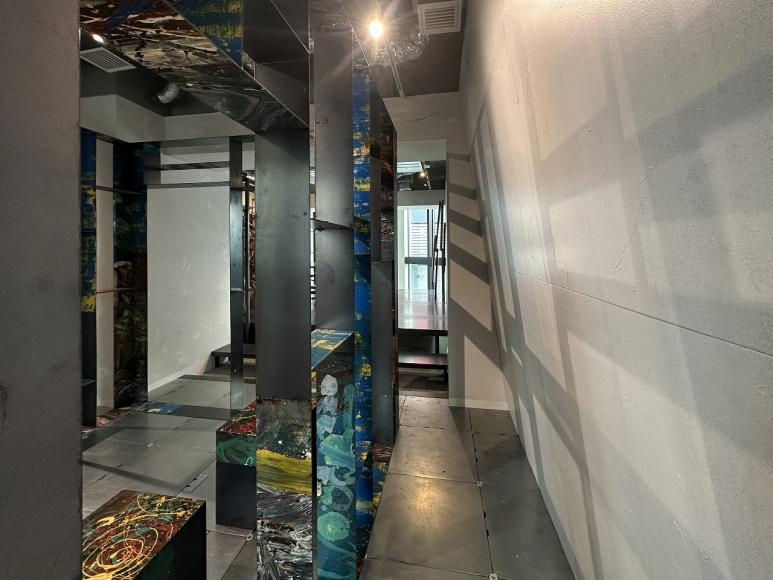


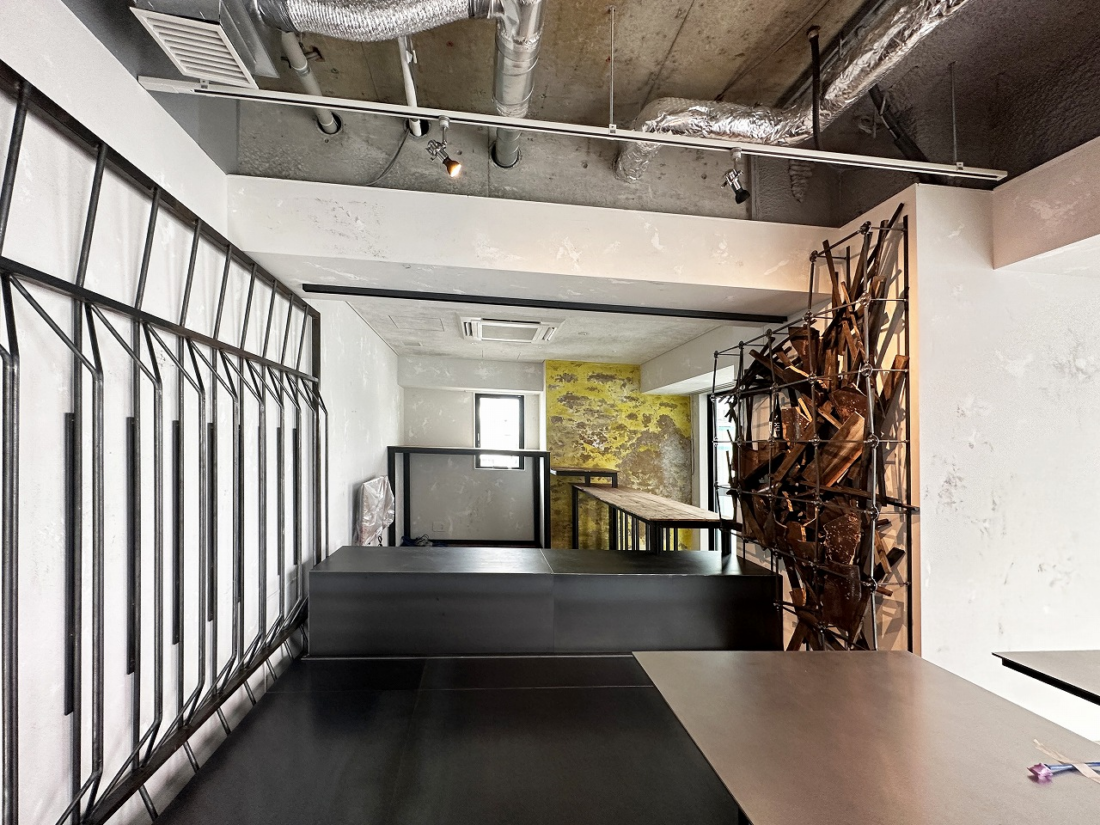
The space that cats use as paths is the space of the town itself. Cats may appear on the roads, but as buildings are constructed on vacant lots, gaps remain between the buildings, and these become the main paths cats take. In terms of a two-dimensional space, the relationship between “figure and ground” comes to mind, but the movements of cats are more three-dimensional. It would be more accurate to describe it as “the parts that are created and the parts that remain.”
In other words, we considered the entire space of the room to be a town, and while we created things according to their function, the goal was to create a free space that would be used however we wanted, with the remaining parts taking shape on their own.
This is because, for this manga artist, it felt like the most natural and creative state would be in a space where he could encounter various things, both front and back, like a cat, and discover something new there with his keen sensibility.
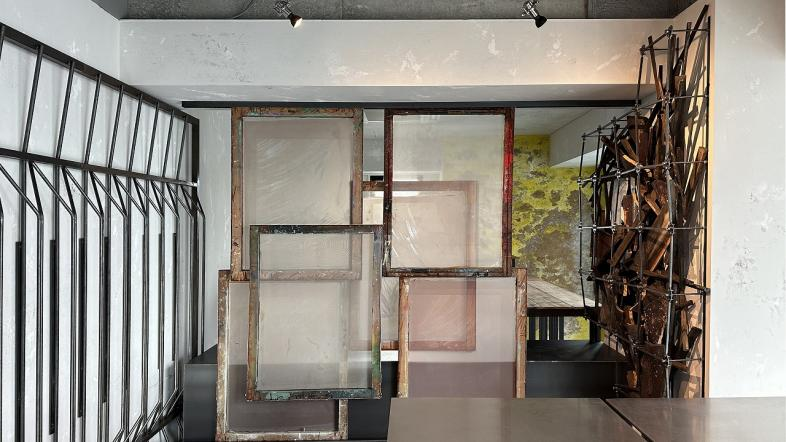

Between the workspace and the break space, you can set up a partition made from the silk screens used in the previous project as needed. It somehow feels like there are cats everywhere…
<Objects made from SOTOCHIKU materials donated by Matsunami Sake Brewery in Oku-Noto>
1. Wall grid frame
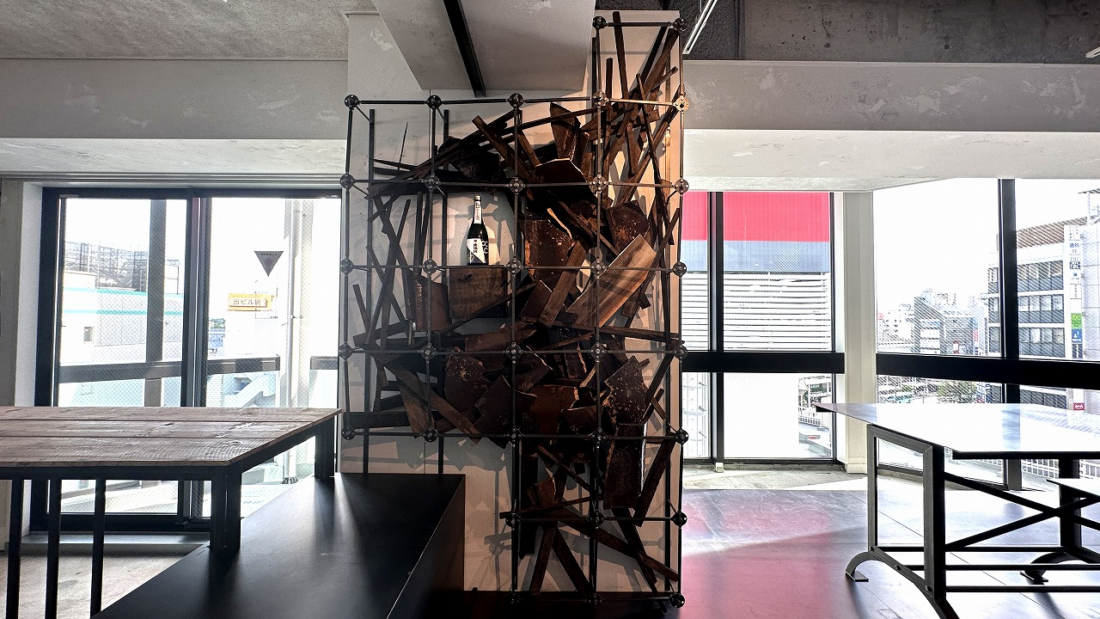
This wall sculpture is made from 10 tiles from the collapsed roof and a wooden timber that supported the tank from which the new sake was rescued.
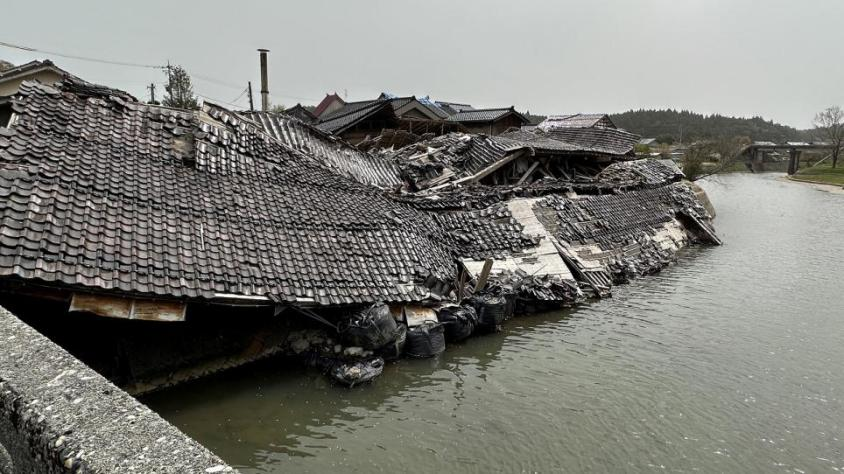
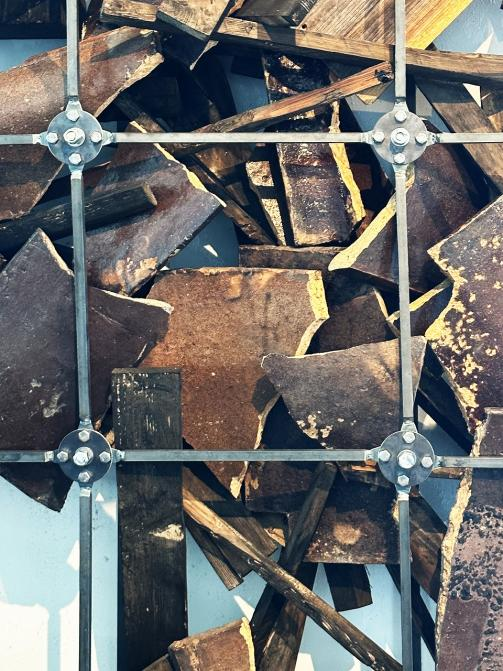
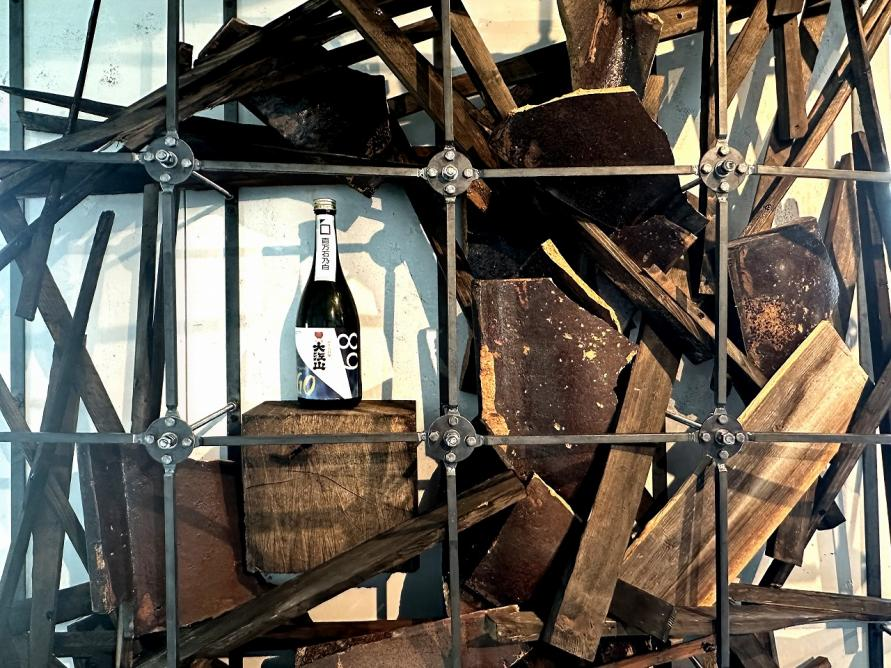
[For one-on-one interaction]
Many of the tiles, which were likely fired over 100 years ago, broke during transport by car due to the patchwork nature of the roads in Oku-Noto, but the rough yellow surfaces of the cracked sections were unique and attractive, so we have arranged them so that visitors can experience this charm.
To secure the tiles and wood to the wall, we use an original grid frame, which is also our company name, to hold them in place from the front. The entire wall is divided into squares with a span of 30cm, which is similar to framing a photograph, as it has the effect of cutting out the objects between them and making them face each other one-on-one.
I left one of the corners empty and inserted the wooden timber that had supported the tank into the lower shelf to create a shelf, and used it as a display space to place Matsunami Sake Brewery’s new sake “Oeyama GO,” made from sake rice rescued from the collapsed brewery, and took photos.
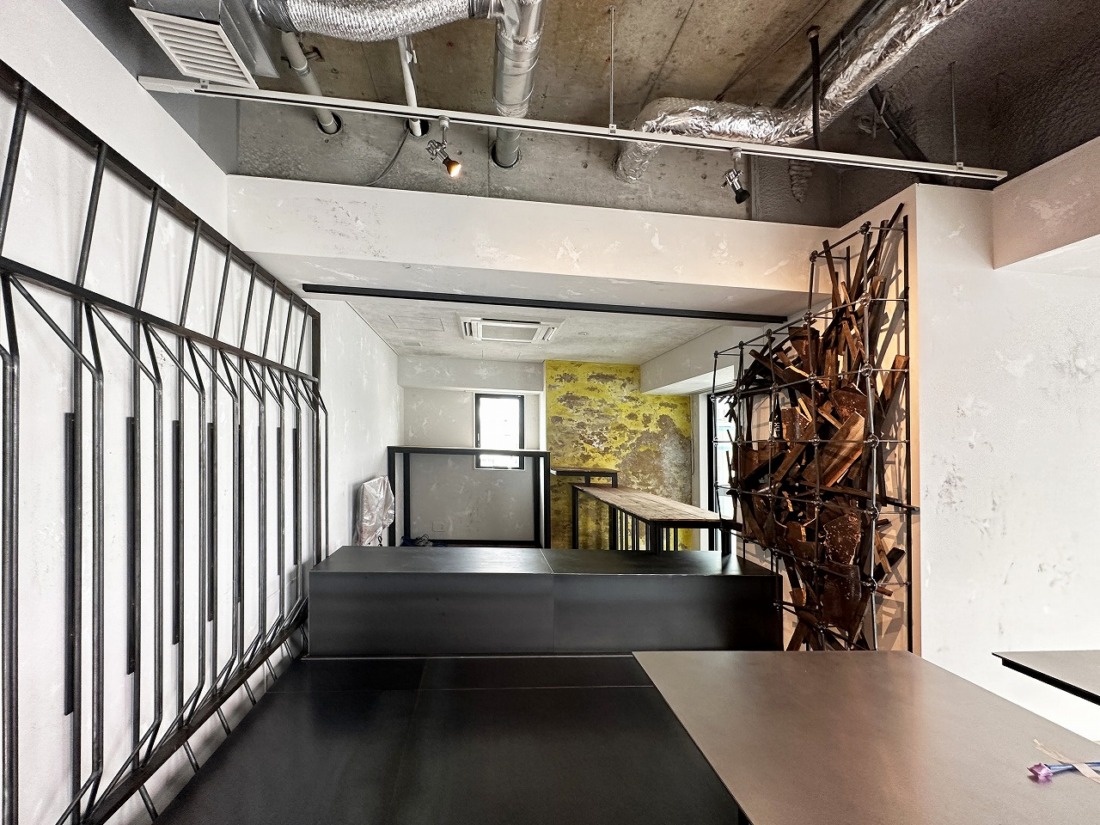
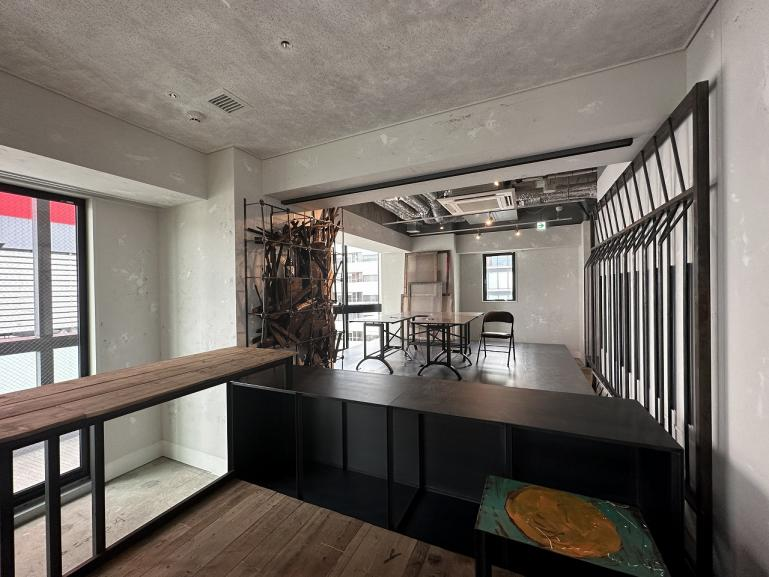
[Mount Oe stands tall]
Matsunami Sake Brewery’s “Oeyama GO” is the only sake still standing upright atop a wooden timber that had rolled under the tilted tank and surrounded by broken roofing tiles. It stands tall and dignified like a chimney standing upright amidst the collapse of everything else in the brewery.
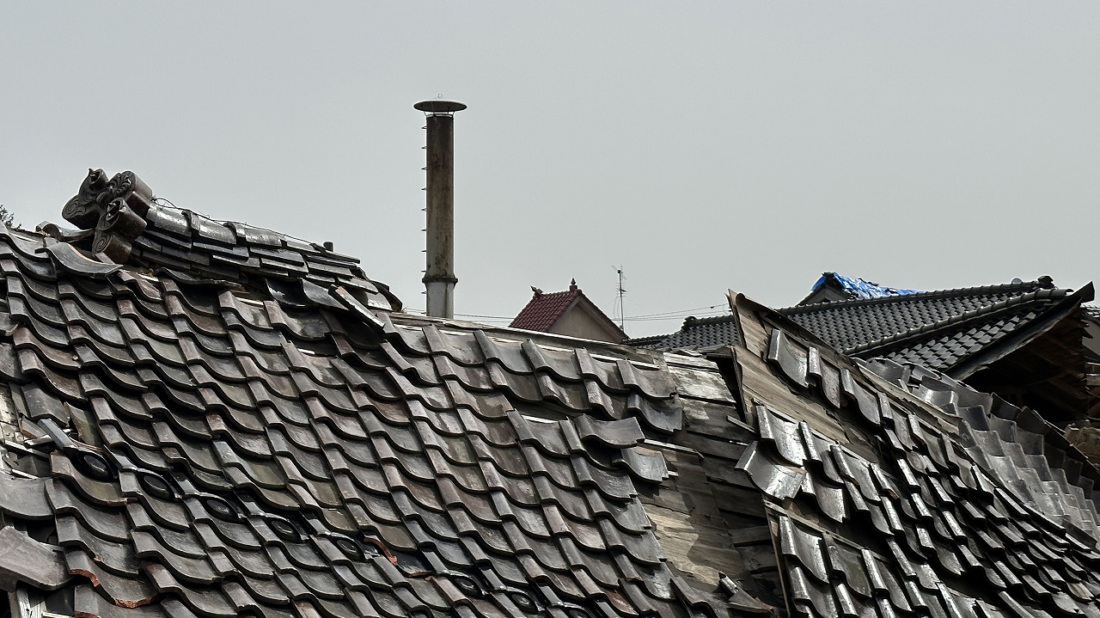
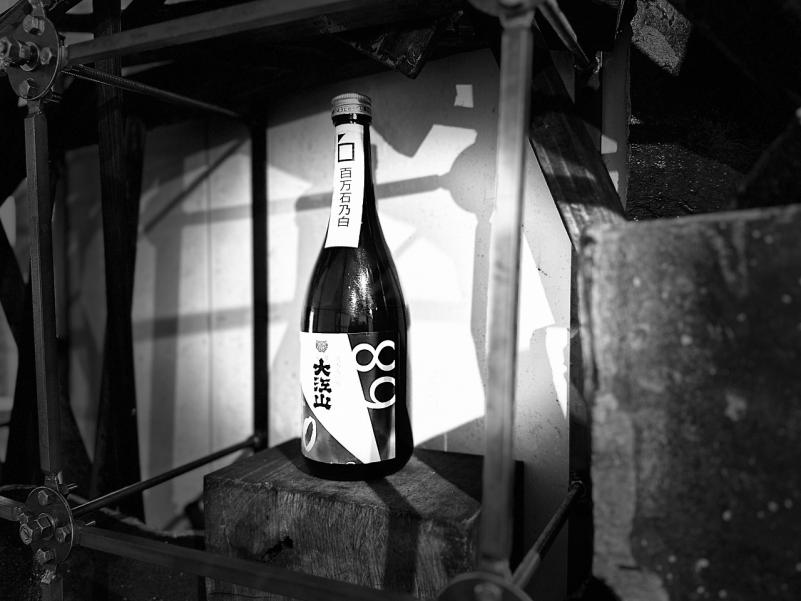
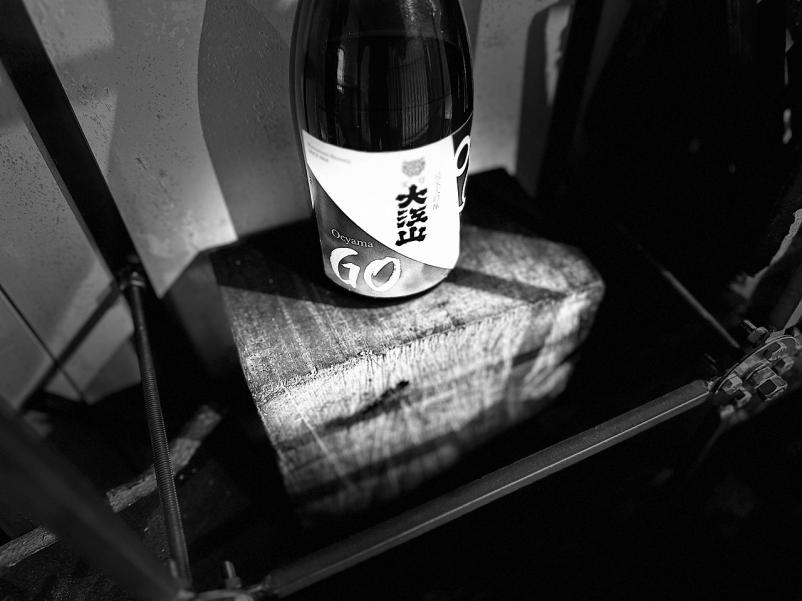
[Life that resides in things]
We received the following email from someone who read the SOTOCHIKU newsletter, which reported on the state of Matsunami Sake Brewery.
“At Matsunami Sake Brewery, the spirit and passion of the people who have been involved throughout its 150-year history is vividly and precisely expressed in the collapsed houses and tools left behind, as the brewery came to an end with its collapse.
It’s amazing how much passion they have poured into sake brewing over the years… This feeling is deeply ingrained in each of the houses and tools shown in the photographs. (Omitted)
The meaning and value of an object’s life may be more profoundly and succinctly expressed in its appearance after it has completed its life.
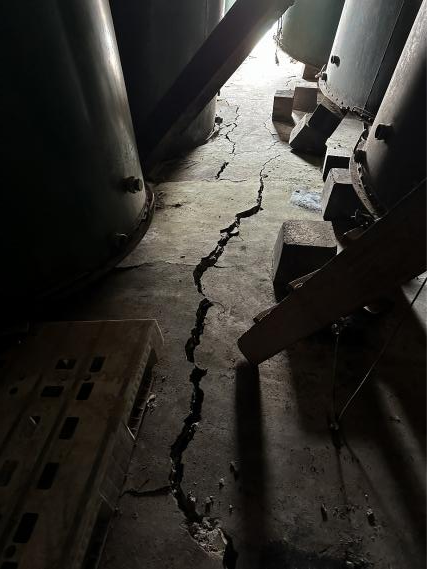
We believe that by creating an environment where people can interact with objects one-on-one, the spirit of Matsunami Sake Brewery’s 150 years of passion for sake brewing will be conveyed to strangers. The manga artist from Kichijoji is a very sensitive person, and he understands this story very well, so he is very happy about the existence of this wall. He says this will be a place where many friends can gather.
[From disaster chaos to festival chaos]
Now, this entire wall sculpture was created with the image of a Noto festival in mind. M and I will be participating in the Udezu Abare Festival on July 5th and 6th. This is because we are focusing on festivals as a tool to transform the negative spiral of disasters into a positive spiral.
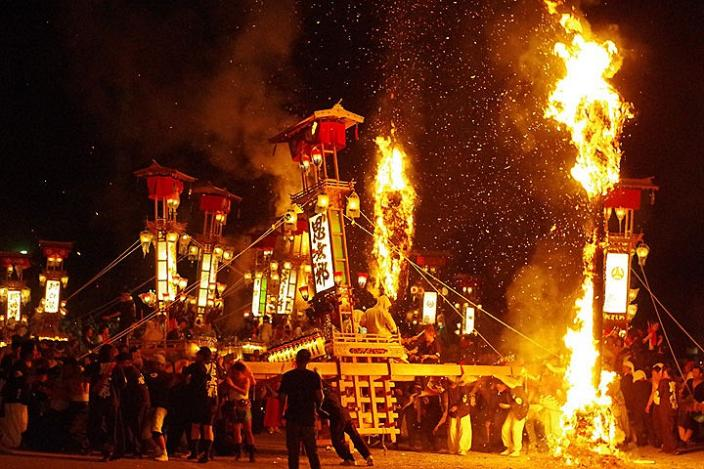
This object was created with the image of a towering pillar of fire and a kiriko lantern. Perhaps it can convey the feeling of a fierce festival with flames blazing up towards the heavens.
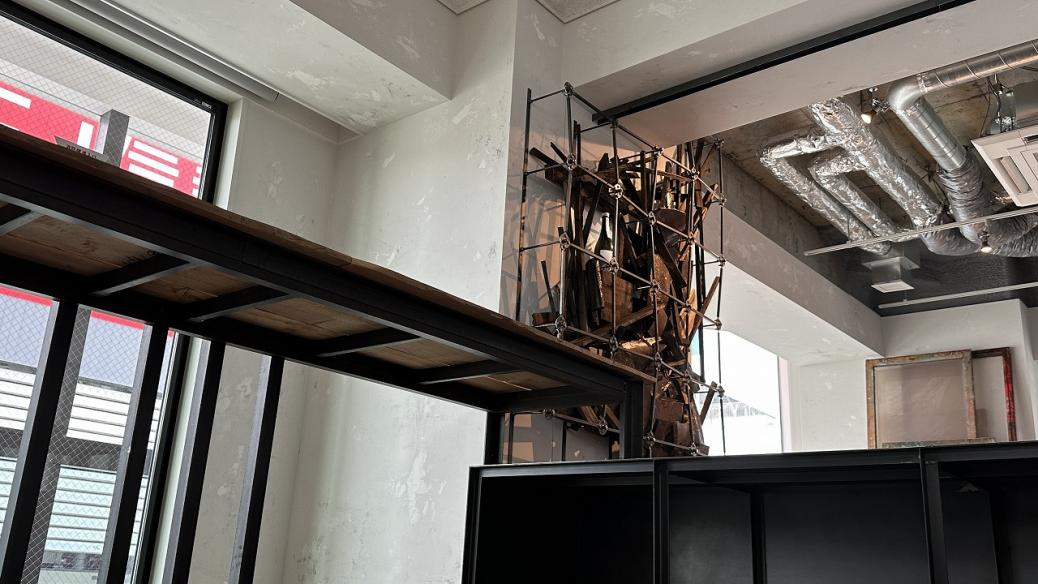
It is my hope that this energetic, festival-like object will inspire the people of Noto.
2. Clay from the clay walls
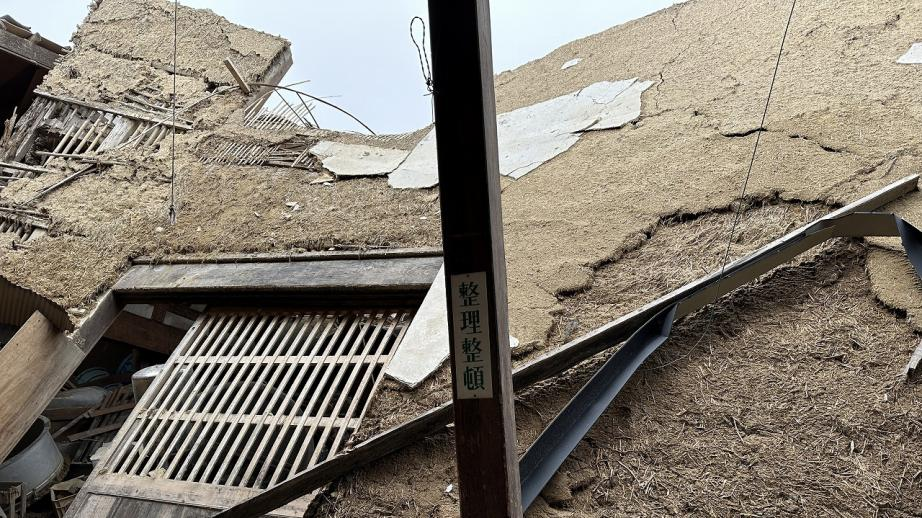
The entire wall was painted with soil taken from a ruined earthen wall. Noto’s soil has a strong yellow tint, so we used the yellow paint to create a bright finish.
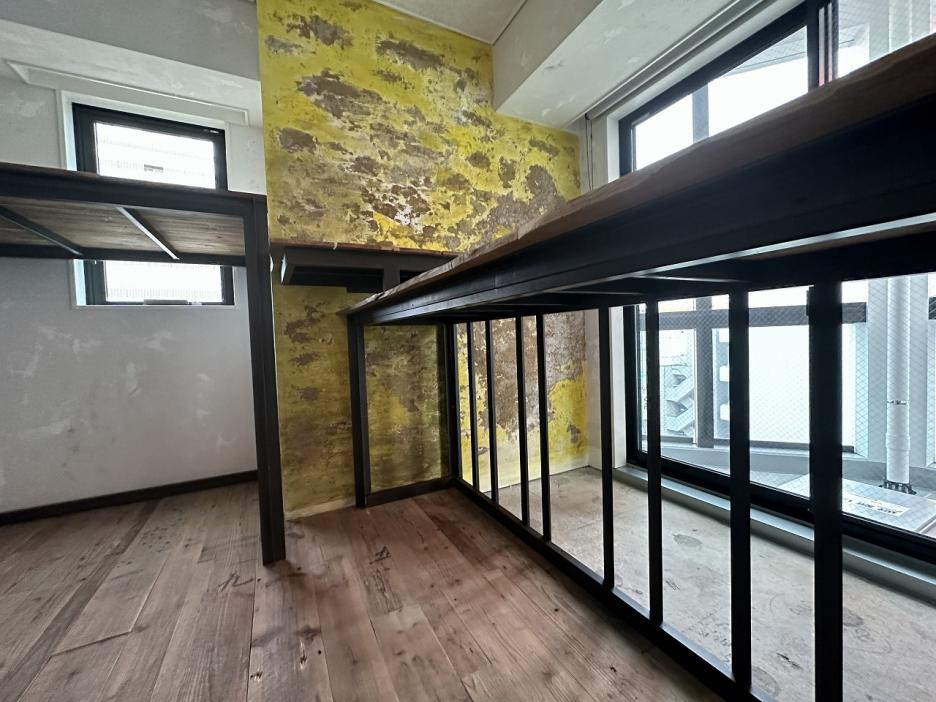
This space is the first result of the project “Reusing things destroyed by the Noto Peninsula earthquake for the future.” We hope to continue creating spaces in various places in the future where the history of the Noto Peninsula can be passed down.
<Scenes from Oku-Noto>
According to Mr. M, who is a volunteer who volunteers to provide meals to the private sector in Anamizu Town, meals are no longer provided to residents but are now provided almost exclusively to volunteers, and deliveries have shifted to places where local people can meet called “support cafes.”
So how did support cafes come about?
Immediately after the earthquake, relief supplies began arriving from all over the country, and distribution centers for these supplies were established in various locations. Around Golden Week, as the number of people living in evacuation shelters gradually decreased, these centers began to transform into places for residents living at home or in temporary housing to interact with each other. These were support cafes.
Here, even though it is called a soup kitchen, it is no longer a meal to satisfy hunger as in the past, but rather a meal to enjoy some tasty food.
It seems that cultural events such as concerts and lectures are also beginning to be held there.
Six months have passed since the earthquake, and it seems that the cleanup and demolition work has still not progressed, but perhaps people’s hearts are beginning to look firmly forward.
We have also begun taking on the challenge of holding a grand regional event known as a “matsuri” (festival).
In the next issue, I would like to share my experience at the Abare Festival in Ushitsu, Noto Town, which is the vanguard of the Kiriko Festival.
June 30, 2024 GRIDFRAME Toshiro Tanaka

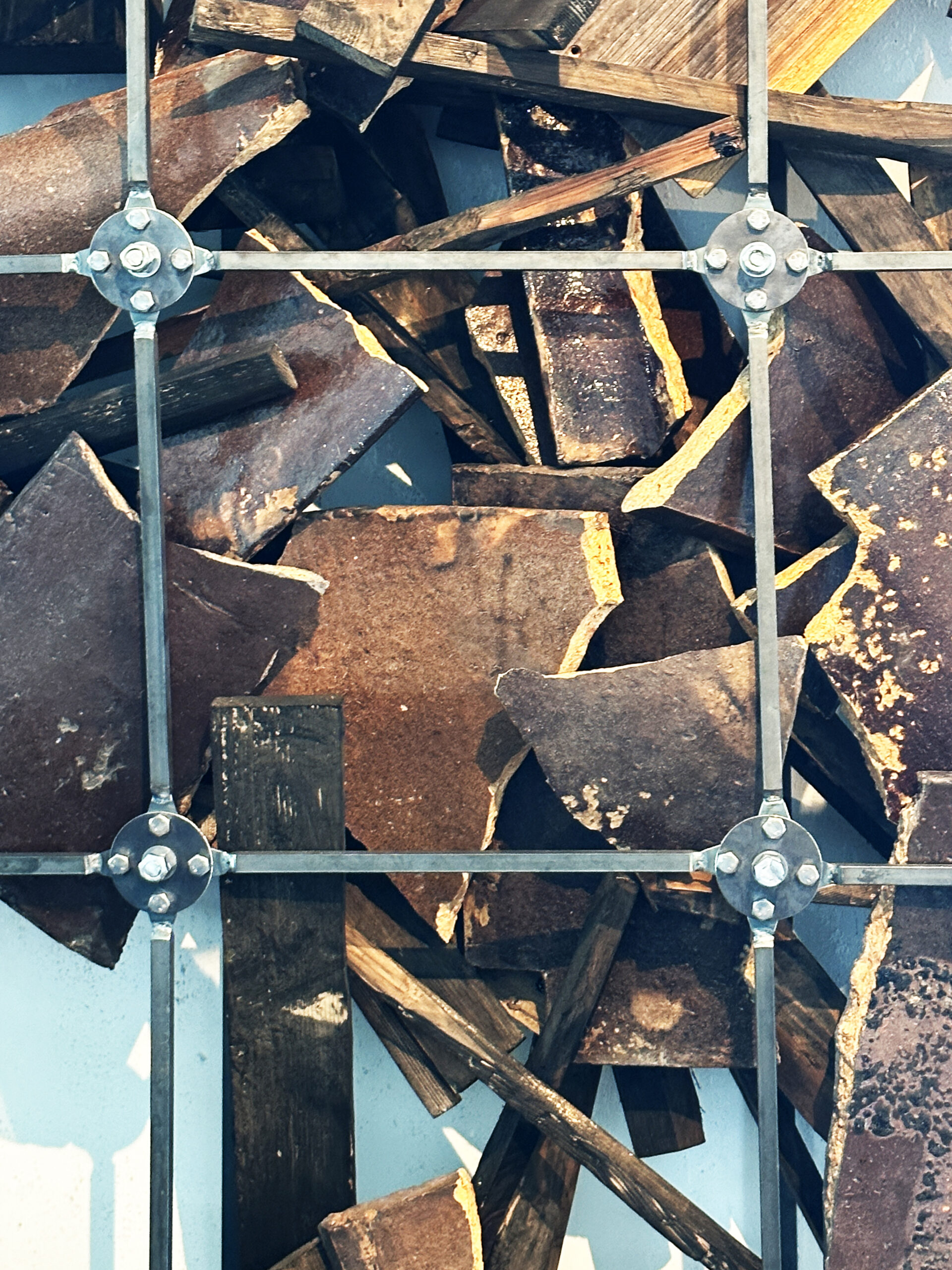
Comments are closed